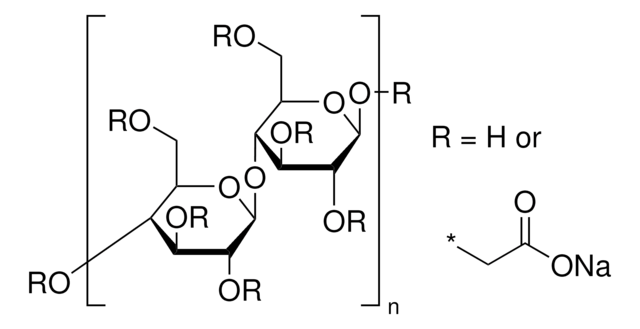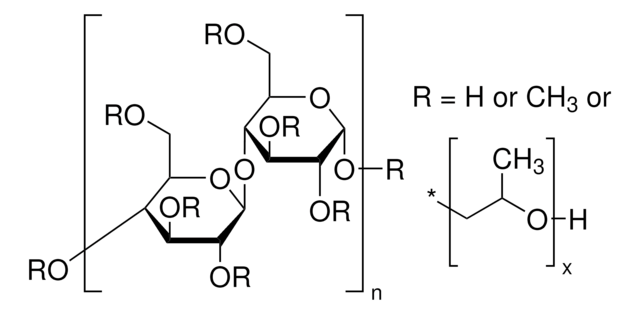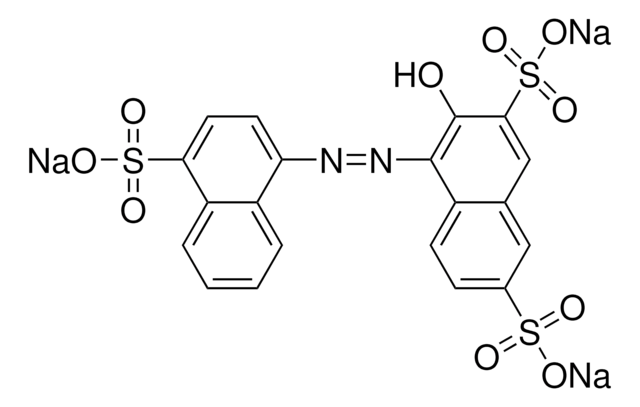C4888
Carboxymethylcellulose sodium salt
Medium viscosity
Sinonimo/i:
Sodium carboxymethylcellulose
About This Item
Prodotti consigliati
Origine biologica
wood (pulp)
Livello qualitativo
Stato
powder
Colore
light yellow
Intervallo di pH utile
(20 °C, 10 g/L, 68 °F neutral)
Viscosità
400-800 cP, 2 % in H2O(25 °C)(lit.)
Punto di fusione
> 300.05 °C ((> 572.09 °F))
Solubilità
water: soluble
Cationi in tracce
Na: 6.5-9.5%
Temperatura di conservazione
room temp
Stringa SMILE
[Na].OC(C(O)C(O)C=O)C(O)CO.OC(=O)C
InChI
1S/C6H12O6.C2H4O2.Na/c7-1-3(9)5(11)6(12)4(10)2-8;1-2(3)4;/h1,3-6,8-12H,2H2;1H3,(H,3,4);
DPXJVFZANSGRMM-UHFFFAOYSA-N
Cerchi prodotti simili? Visita Guida al confronto tra prodotti
Descrizione generale
Low, medium and high viscosity CMCs are all used as suspending agents. Low viscosity CMC is usually used in "thin" aqueous solutions. Medium viscosity CMC is used to make solutions that look like a syrup. High viscosity CMC is used to make a mixture, which resembles a cream or lotion.
Applicazioni
Nota sulla preparazione
The key to dissolving carboxymethylcellulose is to add the solid carefully to the water so that it is well dispersed (well-wetted). Adding the solid in portions may be necessary. Adding water to the dry solid produces a "clump" of solid that is very difficult to dissolve; the solid must be added to the water. Stir gently or shake intermittently; do not stir constantly with a magnetic stirring bar. High heat is not needed and may actually slow down the solubilization process. A mixing device, such as an impeller-type agitator which produces a vortex, would allow the powder to be drawn into the liquid, but it may produce some shearing.
Altre note
Codice della classe di stoccaggio
11 - Combustible Solids
Classe di pericolosità dell'acqua (WGK)
WGK 1
Punto d’infiammabilità (°F)
Not applicable
Punto d’infiammabilità (°C)
Not applicable
Dispositivi di protezione individuale
Eyeshields, Gloves, type N95 (US)
Scegli una delle versioni più recenti:
Possiedi già questo prodotto?
I documenti relativi ai prodotti acquistati recentemente sono disponibili nell’Archivio dei documenti.
I clienti hanno visto anche
Il team dei nostri ricercatori vanta grande esperienza in tutte le aree della ricerca quali Life Science, scienza dei materiali, sintesi chimica, cromatografia, discipline analitiche, ecc..
Contatta l'Assistenza Tecnica.





